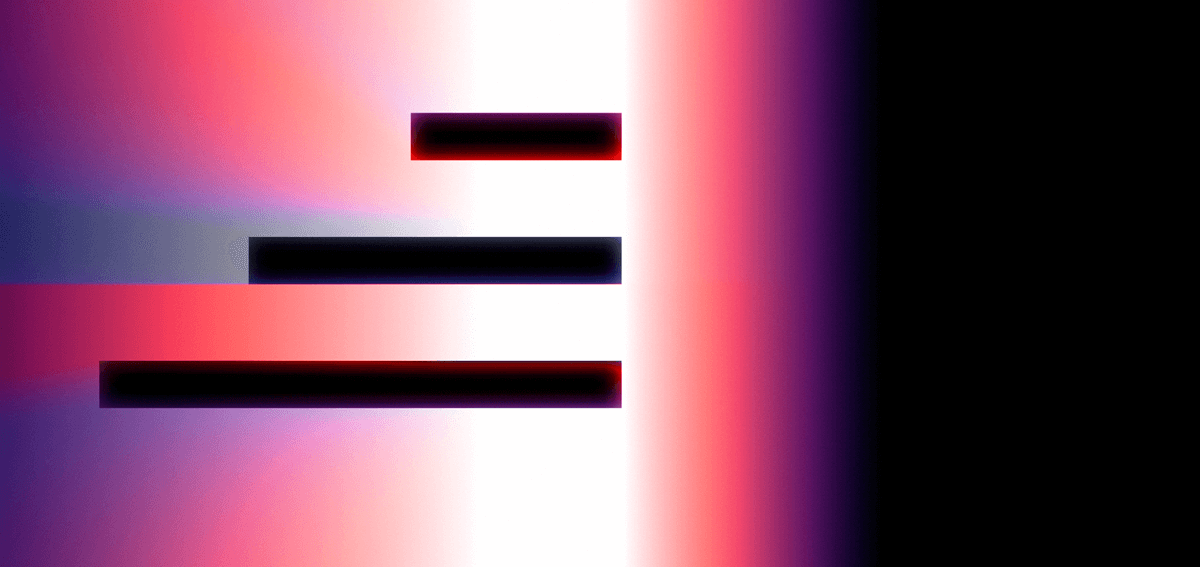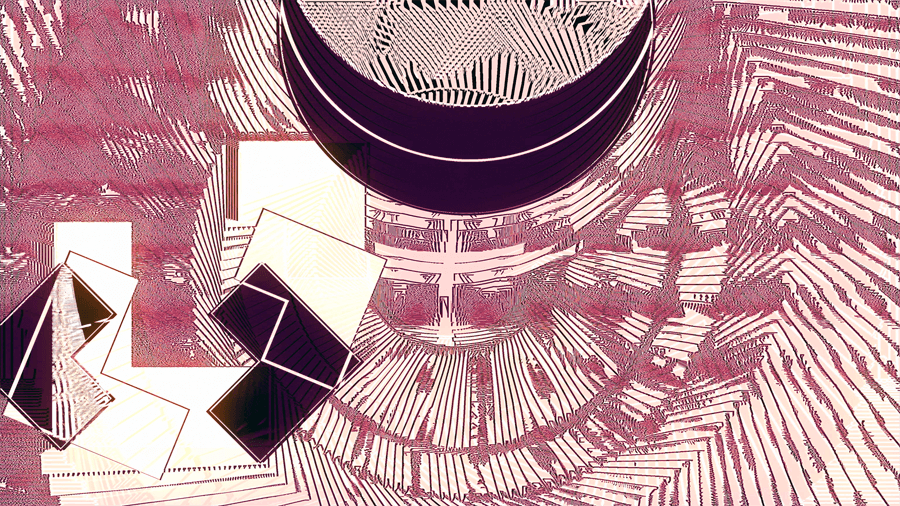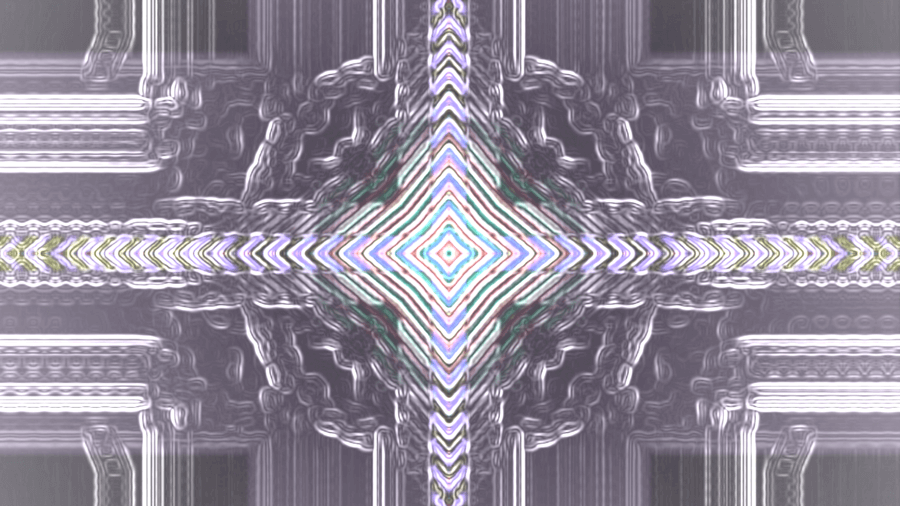Interview by Lidia Ratoi

Whatever a writer may write of Max Hattler, it will be futile. Max Hattler is something you live. Feel. Experience. Max Hattler is an entity placed somewhere special, where there is no normal convention or awareness. Defying any sort of formal categorisation, he works with abstract animation, video installation and audiovisual performance. Currently working as an assistant professor at the City University of Hong Kong, Max Hattler is, actually, no stranger to the human condition. He looks into the humanoid experience, its basic conditions, and binocular vision. Synaesthesia. Perception. And then he starts playing with these very basic conditions. And they transform. They become something else.
In All Rot, Hattler takes the mundane environment of a decaying crazy golf course and transforms it into a split-screen experience of synaesthetic cinema. He is playing with our minds. And it’s a hard drug-like experience. Impossible to give up after one try. Max Hattler’s work is generally characterised by the juxtaposition of contrasting substances. However, it is impossible not to see a clear relation between music and image, between the human and the digital.
He brings contemporary deities into the equation, such as stereoscopic films and VR. German-born, UK-educated, operating in Hong Kong, Hattler is a man of many influences. In Serial Parallels, Hong Kong’s architecture is reinterpreted as parallel rows of film strips. His doctorate, Audiovisual Abstractions, was a multi-screen experience, taking visitors through an entire alternate dimension, true to the British rebellious, punk-loving attitude.
Works such as Hattlerizer 4.D are completely improvised, while works such as Matter and Motion are the result of wide collaboration and extensive research (in this case, a collaboration with composer Lux Prima and a group of animators from the School of Creative Media at the City University of Hong Kong).
Max Hattler is not your typical academical presence. But he is someone fit to mould young minds. His research project, Meaning and Narrative in Abstract Animation, aims to go from the dominating cinematic realism, which leads to an overkill of the same media images worldwide, to a fresh, abstract animation, which can offer a space outside of realism, and enable perceptions that are different from the ones we experience every day.


As a visual artist and academic, your work spans design, music and filmmaking; for those that are not familiar with your background, could you tell us a bit about it?
I work with animation techniques across short film, video installation, and audiovisual performance formats to explore relationships between abstraction and figuration, aesthetics and politics, sound and image, and precision and improvisation. The development of my practice has been nurtured by a range of influences ranging from music production to design, visual art, media theory and esotericism. I have found animation, in the widest sense, to be the medium that best combines all of these things.
Your current research focuses on ‘synaesthetic experience and visual music, the narrative potential of abstract animation, and expanded artistic approaches to binocular vision.’ Could you please expand more on these ideas?
My current work can be divided into three main areas, all of which relate to audiovisual abstraction in the moving image. The first strand revolves around the relationships between musical structures and moving images. My films aspire to a state of synaesthetic oneness, where the combination of sonic and visual stimuli become more than the sum of their parts. This can be seen, I hope, in my recent works Matter and Motion, ➕, and Divisional Articulations, which are currently doing the rounds at film festivals.
The focus in my live performances rests more on the improvisational aspects of playing live in front of an audience. Through a combination of generative software and control devices, my live setup functions like a visual instrument which lets me respond in real-time to aural events from sonic/musical live collaborators. The latest version, Hattlerizer 4.D, also allows me to generate sound directly from the visual output, creating an intense synaesthetic experience for the viewer.
The second research area focuses on the narrative potential of abstraction in motion. While narrative and abstraction are generally seen as contradicting terms, their fusion through animation can result in new types of storytelling. Building on previous work, such as my War on Terror abstraction Collision, I’m currently engaged in a 3-year research grant, which will manifest in a scholarly publication on the topic and a series of abstract films that explore different meaning-making strategies.
Serial Parallels, a film related to this line of inquiry, though not strictly abstract, will come out in early 2019. Here, Hong Kong’s signature architecture of horizon-eclipsing housing estates is reimagined as parallel rows of film strips. Through this process of abstraction, new visual and temporal relationships are forged, and a new movement is created, through which a different perspective on the city emerges.
The third research cluster explores what I like to call ‘expanded stereoscopy’. I’m interested in how stereoscopic vision with 3D glasses or VR headsets might be used to create new visual poetics and abstractions by creating spaces where depth relations are paradoxical, by employing binocular rivalry to create unique visual effects, or by stereoscopically excavating new dimensionality and visual intensity from the flat source material.
My work in this area began with the creation of stereoscopic installation III=III for Animamix Biennale 2015-16. I’m currently working on applying expanded stereoscopic techniques to live performances and immersive environments.
Divisional Articulations is an audiovisual four-minute short film that juxtaposes digital geometric animation with the music created by composer Lux Prima. What is the intellectual process behind this project? What or who inspired you?
Divisional Articulations is inspired by Paul Klee’s Bauhaus teachings, Constructivist art, and John Whitney’s 1972 film Matrix III. The animation was created with a group of students under my direction, where everyone worked on a short sequence only. Since many of the students had never done any animation before, it was important to keep it simple.
We emphasised moving basic geometry to the music while creating interesting visual configurations. The result was then fed through a digital video feedback process. Repetition and distortion are key motifs in the music, and video feedback became the way of mirroring this visually through repeating geometries and distorting complexities.
What do you want to bring to the audience that interacts with Divisional Articulations?
I’d like the audience to be completely entranced by the work, where they stop questioning the meaning or purpose of it, stop differentiating between sound and image, just flow along with it, and are sad when it’s over. Not sure if that has been achieved, but yes, that would be the goal.
What directions do you see taking your work into?
More visual music, more abstract narratives, more expanded stereoscopy. I’ve also started curating international screenings of abstract and experimental works by Hong Kong artists under the Relentless Melt banner. I’d like to do more of that too.
What is your chief enemy of creativity?
Websites such as www.maxhattler.com, https://www.instagram.com/max_hattler, https://www.facebook.com/maxhattler, https://twitter.com/maxhattler, https://www.facebook.com/relentlessmelt
You couldn’t live without…
Stuff.






